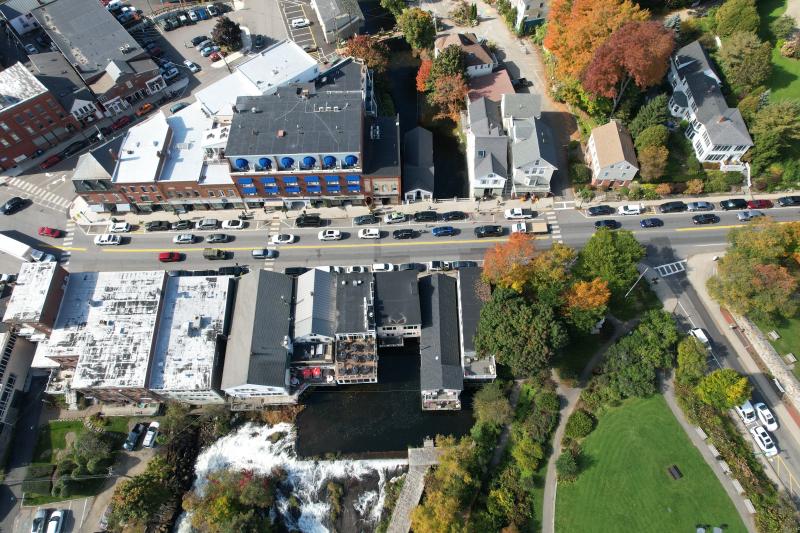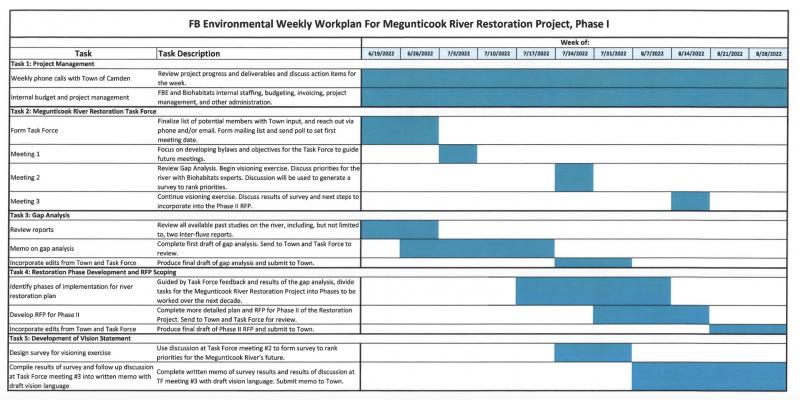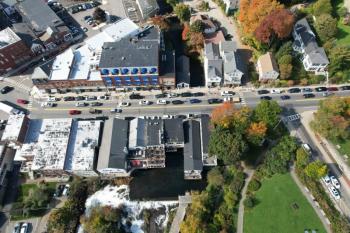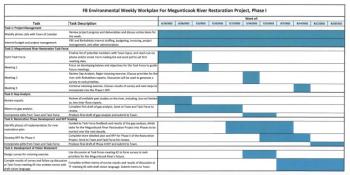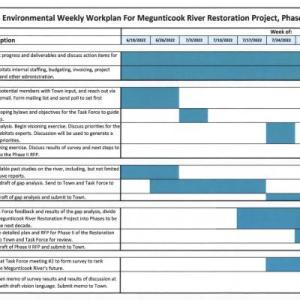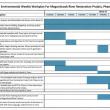Camden moves forward with Megunticook River project, Phase One
CAMDEN — The conversation was frank and lengthy, but by the time the five members of the Camden Select Board finished discussing whether to contract with consultants to guide the town’s Megunticook River project forward, they had reached unanimous consensus.
Voting yes, they approved the scope of work (see full Select Board packet for entire proposal) submitted by two Maine consultant companies, FB Environmental and Biohabitats, as well as spending up to $20,000 this summer and fall to complete phase one of what is to being called the Megunticook River project.
The first order of business is for the two companies to create a task force consisting of Camden citizens interested in the project. That project has been broadly defined and has engendered much debate in the community, with a core point of contention being the idea of removing the Montgomery Dam, at the head of Camden Harbor, where the Megunticook River empties into the ocean.
The money to spend on this phase of the project derives from remaining funds associated with a previous grant received by Camden to complete the 2021 Megunticook River Feasibility Report. That report outlines the existing state of the river and its watershed, and proposes environmental restoration actions.
As the report made its own proposals, a citizens group organized in opposition to removing the Montgomery Dam, and is concurrently requesting the town to include a warrant article on the next town meeting asking voters if they want to save the dam.
Now, however, the Select Board is hoping the consultants will facilitate a larger municipal conversation about the project. No action to date has been made by the town concerning the proposed warrant article concerning the Montgomery Dam.
Camden Select Board member Sophie Romana wrote on the Phase One to-do list assembled for the consultants: “This phase is critical to set the town of Camden on a path to successfully engage with the community, stakeholders, grant funding agencies and above all, to preserve this amazing asset for the benefit and enjoyment of people of Midcoast for many generations to come.”
She specified that the task force, and the consultants, are to review recent studies of the river, “in particular, identifying the gaps in the Interfluve Report — to inform what further exploratory studies the town needs to conduct in the future.”
Phase One goals also include planning for the implementation of another grant, if it is to be awarded to Camden by the National Fish and Wildlife Foundation. That grant application was submitted by the town June 1 and is named, “Pipeline Megunticook Watershed Flood Resiliency and Habitat Restoration.” The amount of money associated with that grant is to be used for community engagement and review conceptual designs, as well as engineering, for four dams and fish passage at sites where dam removal is not feasible.
And, the town wants the consultants to use Phase One to create a vision for the river.
“The Megunticook River has been used for commercial and industrial purposes that no longer exist today,” wrote Romana. “But the Town of Camden (and adjacent towns with an interest in the river) have not crafted a new vision for the River. For this task, we are looking to set the basis for a community visioning exercise that will look at how the town of Camden wishes to use the river moving forward. Those uses could be commercial, environmental, recreational and need to take into account benefits for the public good and future generations.”
The forming of the task force will be the responsibility of the consultants, with town input. Citizens will be encouraged to participate, but the methodology of the recruitment of the group will be up to the consultants, said Romana.
She is to be liaison to the consultants.
Board member Alison McKellar suggested inviting the consultants to the next board meeting to introduce themselves, and talk about their pending work with Camden.
“And we will review their process,” said board Chair Bob Falciani.
The board also discussed June 6 the scope of the grant application submitted June 1 to the National Fish and Wildlife Foundation.
“There has been a lot of talk of what that grant will and will not pay for,” said board member Stephanie French. “That is what has propelled a lot of confusion and angst in the community.”
She continued: “If this task force is created and that grant is received....”
“It’s a data point,” said Falciani.
“ I don’t understand the question,” said Romana.
“I think the questions makes sense to me,” said McKellar.
She added that the grant that the town is pursuing involves the design phase, without, “any kind of construction.”
McKellar said the amount of grant money associated with design options is uncertain, but said: “This grant application does ask for money to design alternatives that would keep the dam and do different types of fish passage.”
French said: “If the grant is not going to look at a dam option, then this whole money we are spending on this sort of task force and proposal — we’re just throwing it up in the air.”
Other members on the board disagreed.
“We need to know more about full costs of complete status quo,” said McKellar.
“Whether we are awarded this grant or not is not going to stop us from thinking about how we are going to use the river, what we are going to do about dams that have outlived their useful life as an industrial or commercial dam, or whatever it is,” said Romana. “We really need to still work on what does the town want to do with the river. What is our usage? Is it environmental? Is it fishing? What kind of recreational activities we want to have?
“That grant is not the only step in a process that is going to be multi-year, that will outlive all of our mandates. In 10 years, we will still be working on the river.”
French said: “If we get this grant and it will not fund something that we are trying to bring everyone to the table, is this the right time to even start having that?”
Board Chair Falciani said: “Financial is one element on the matrix of options. The more overriding issues are environmental, practical, historical — we need to consider on all of the dams. If you don’t go out and try to search for information to answer your questions about financial — the town may decide to fund it all on its own.”
French said she was trying to reset the conversation, based on her thoughts about the project.
“That’s cool,” said Falciani. “There’s a lot more discussion that needs to happen.”
French said: “It’s encouraging to hear Alison say that the grant could be broad enough.”
A conversation ensued about semantics, the distinction between the use of the word “restoration” and “project” (project was selected) and what counts as a nature-based solution.
“Putting words to peoples’ fears and having it talked out is the most important part of this process,” said French.
Board member Tom Hedstrom concluded the conversation: “It’s an exciting opportunity in some ways. We have a lot of people in the community that love the traditional beauty of downtown. We have people that love to fish, that love to kayak. This is our opportunity to address maintaining, preserving, making sure that those things are here for a long time. The things that we love.”
Reach Editorial Director Lynda Clancy at lyndaclancy@penbaypilot.com; 207-706-6657

